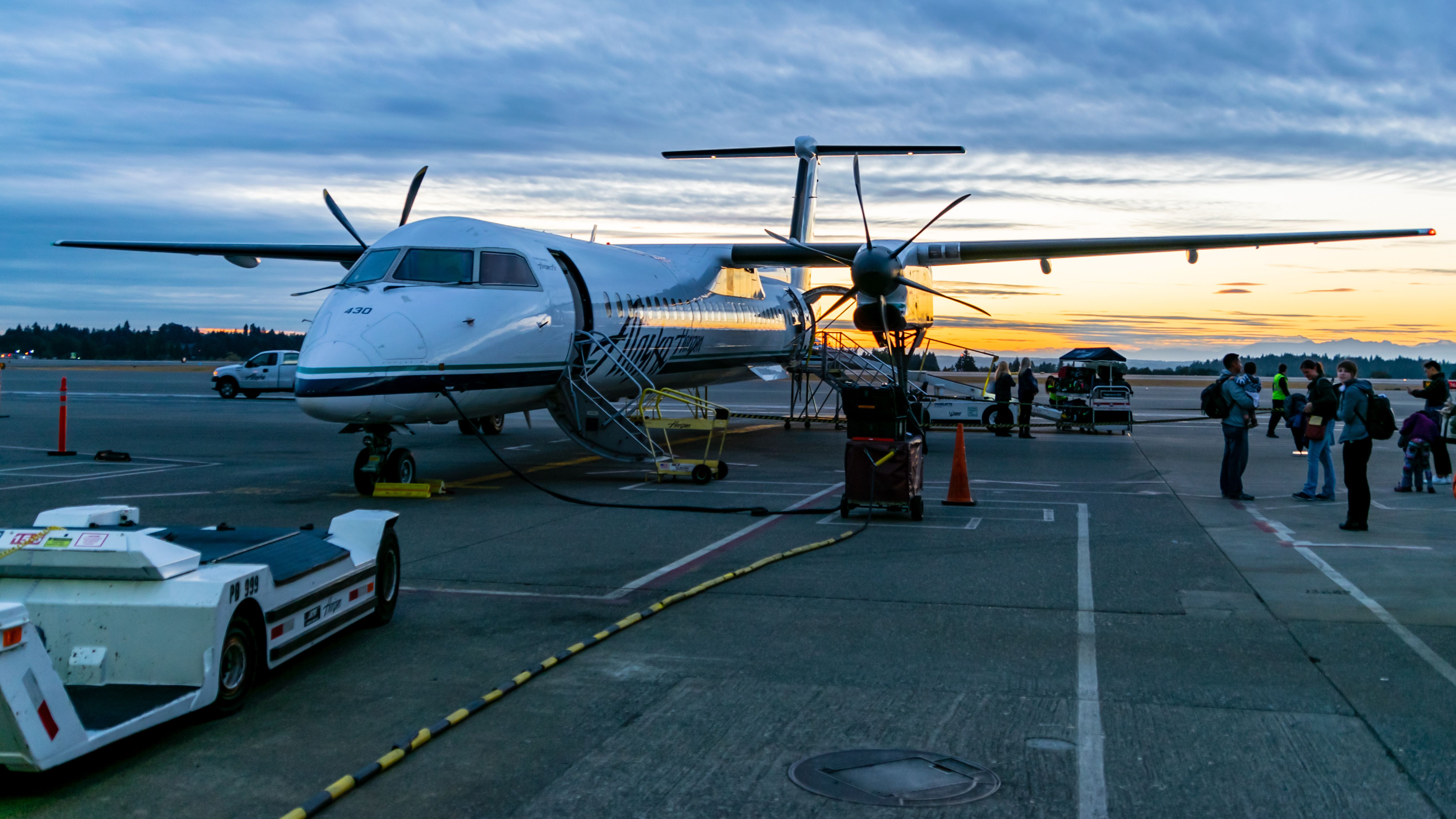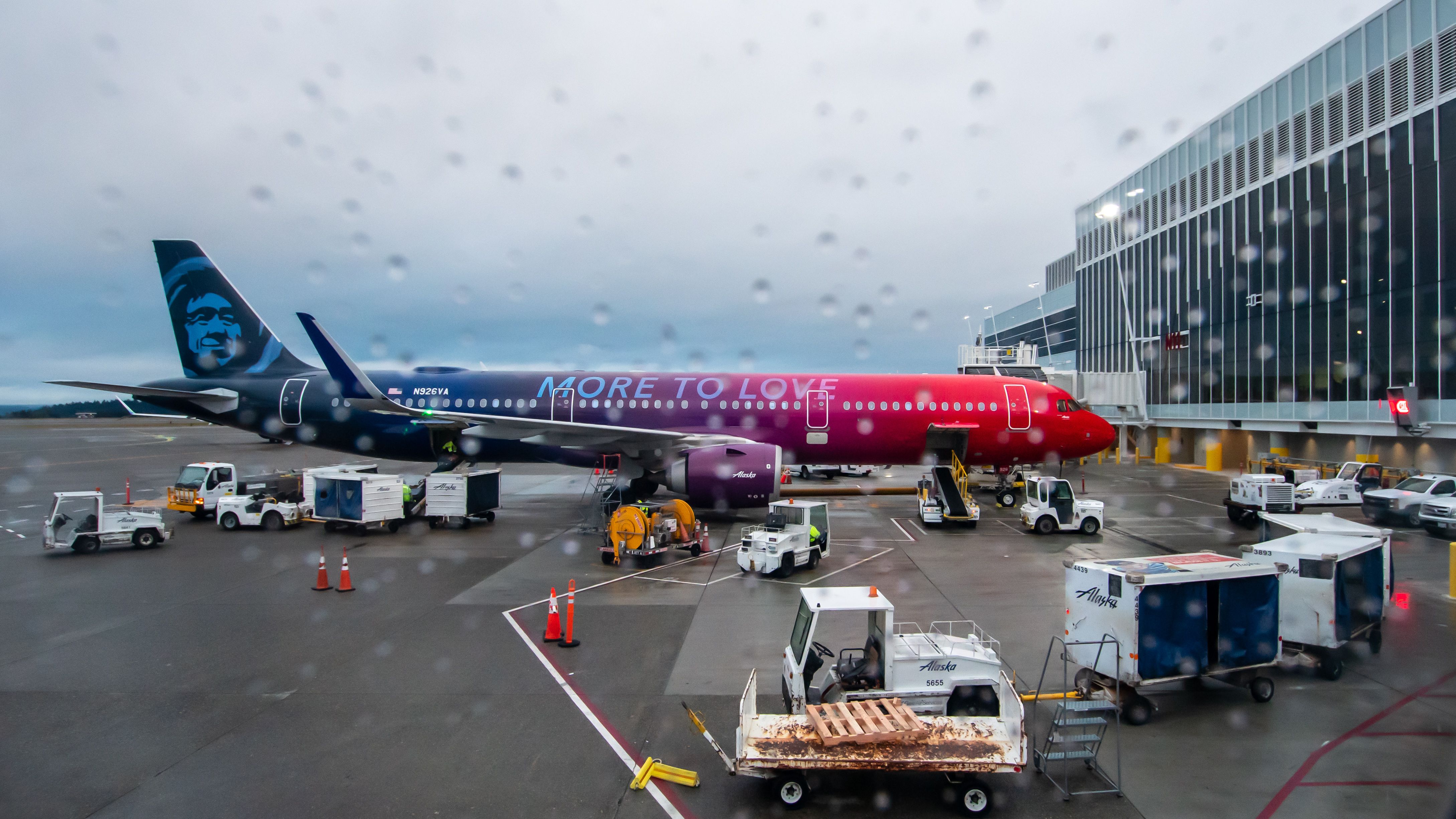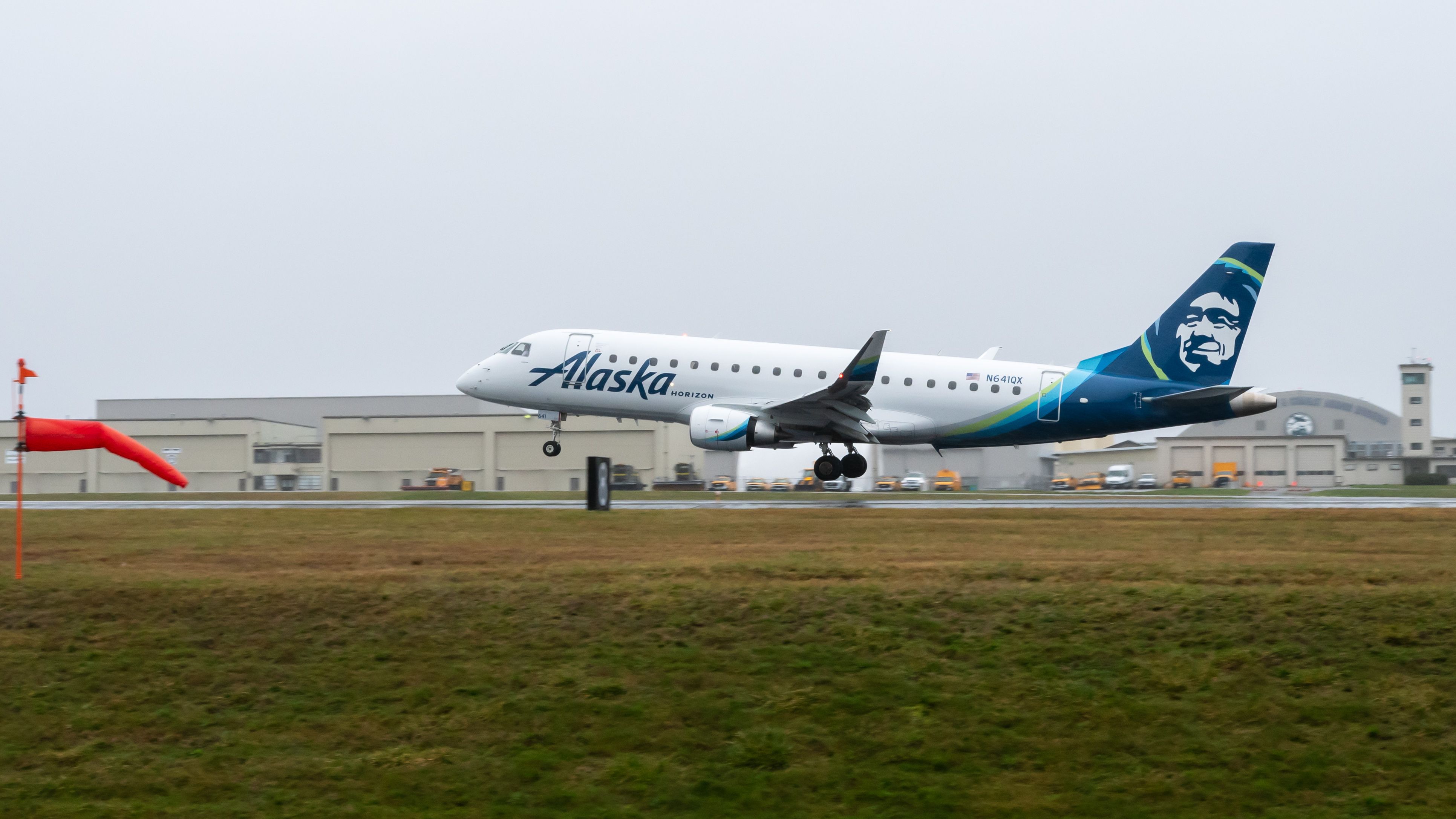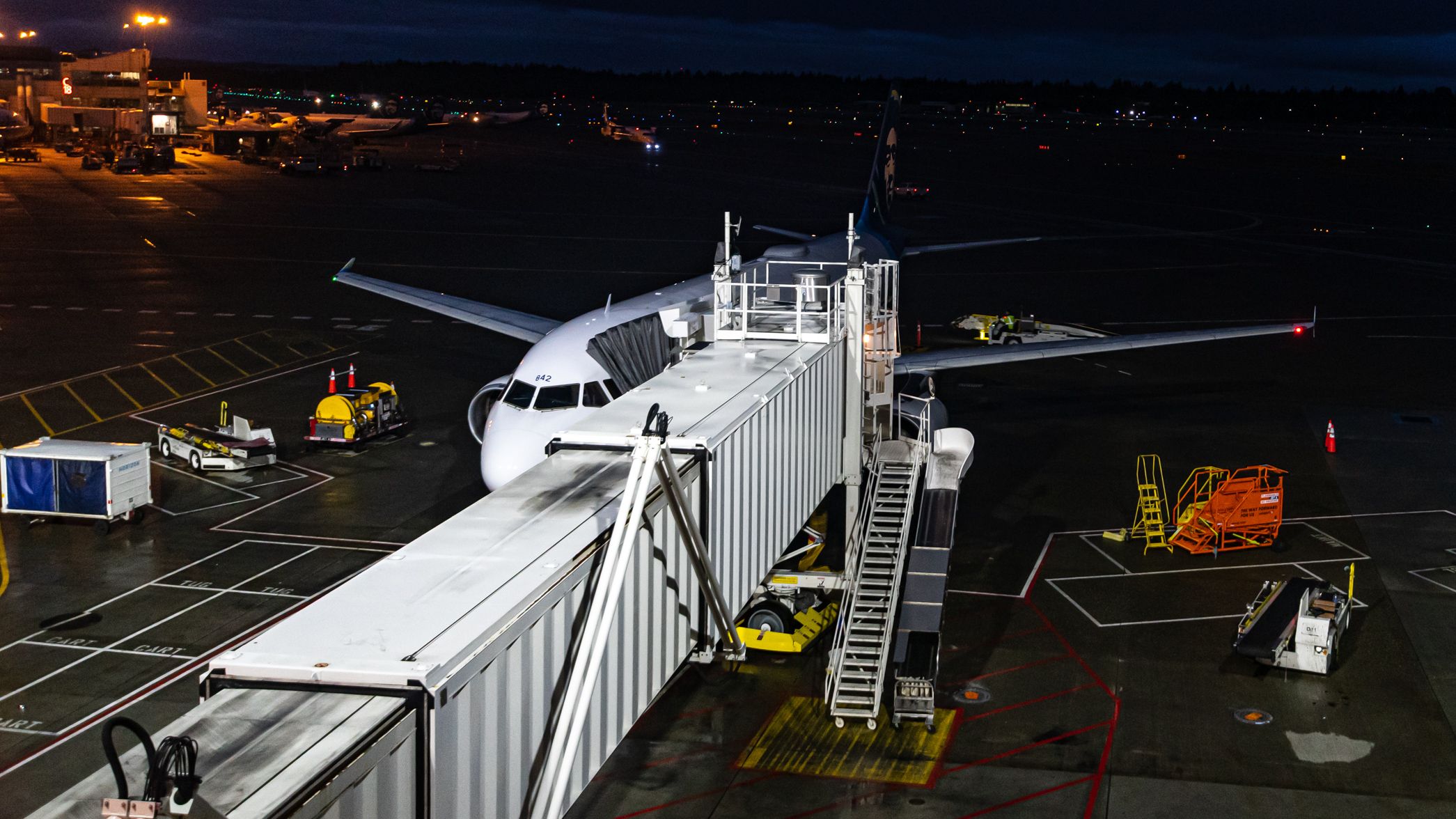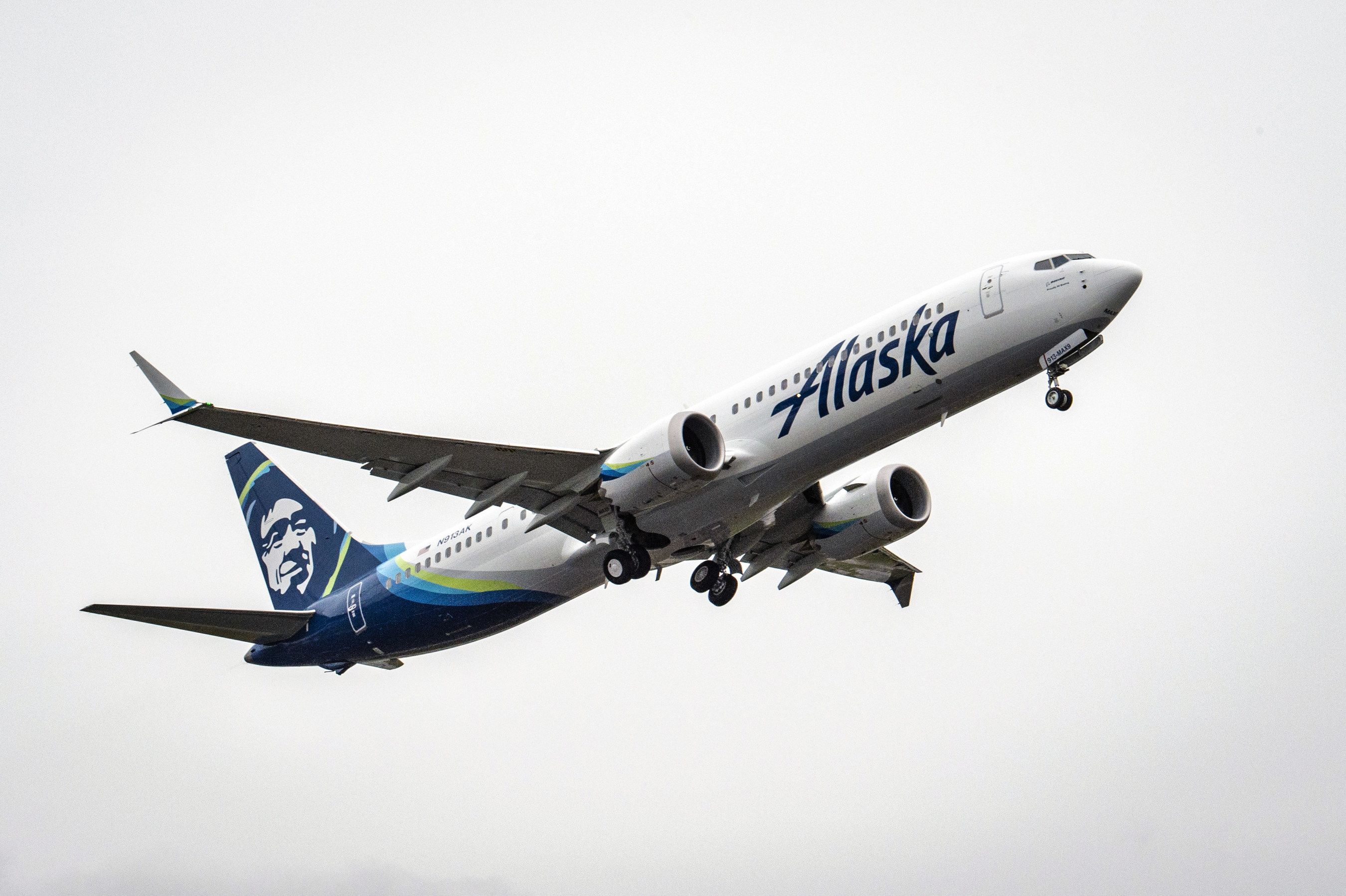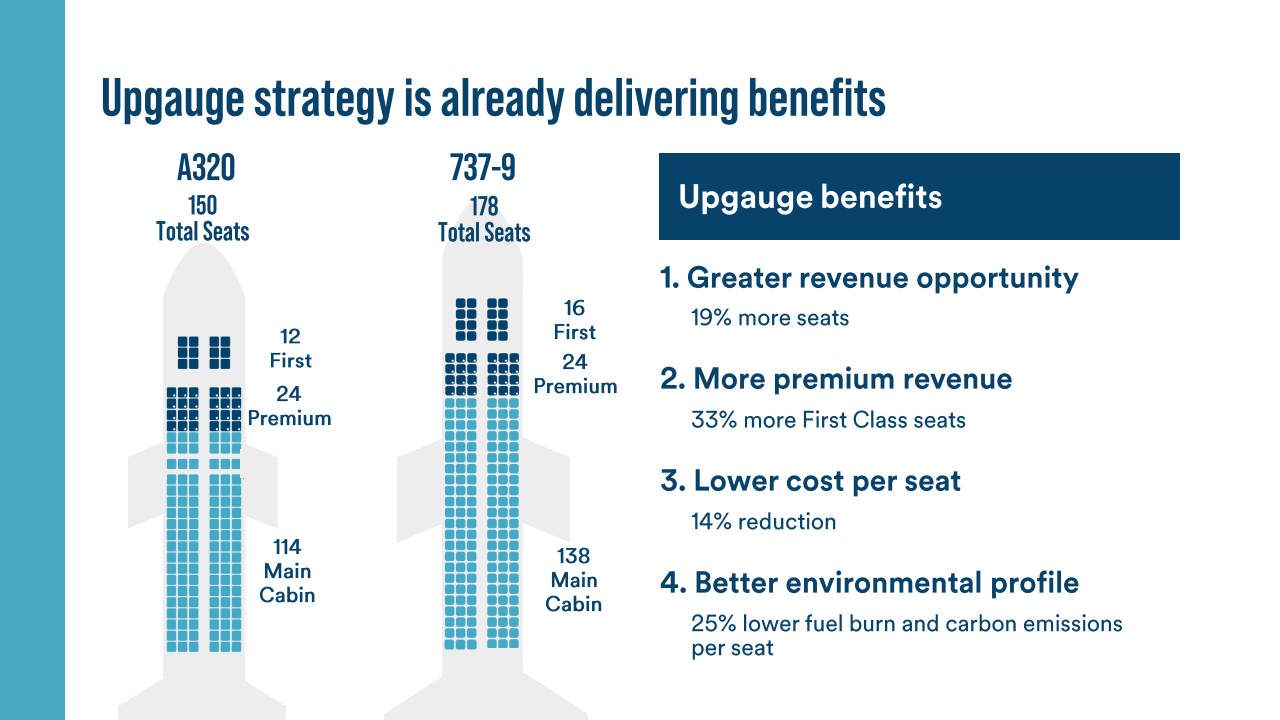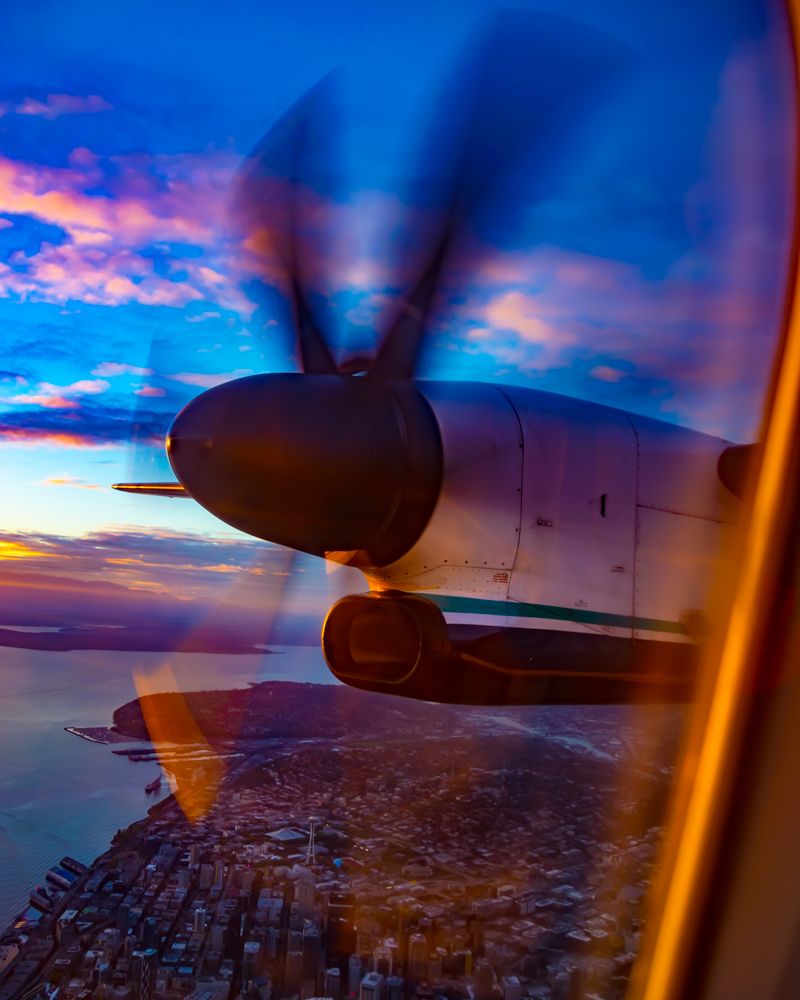The end of an era in Alaska Airlines' fleet is near. By the end of 2023, Alaska Airlines and its Horizon Airlines regional subsidiary will divest the iconic the DeHavilland Aircraft of Canada Dash 8-400 (formerly the Bombardier Q400) and its former Virgin America Airbus A320s and A321s.
End of An Airbus + Boeing Fleet
Photo: AvgeekJoe Productions
For Alaska Airlines, after a successful acquisition of Virgin America, the airline got to operate Airbus A320s and A321s throughout the merged network. These aircraft used the same general engines as the Boeing 737s but had a different design as the aircraft was designed in Europe versus the United States of America. One might want to review the Simple Flying 2019 article on spotting the differences between the 737 vs. A320. The 737 family is more angular, while the A320 family is more round.
But Alaska Airlines' Nathaniel Pieper, Senior Vice President, Fleet, Finance & Alliances in an earnings call, wants to "upgauge" the Boeing fleet to a more efficient, more capable fleet by making a massive 737 MAX purchase to replace the A320s and A321s inherited from Virgin America. The MAX jets are more efficient with parts commonality, training simplicity, scalability, better fuel efficiency, and reduced operating costs.
Why is Alaska Airlines going Boeing + Embraer?
Photo: AvgeekJoe Productions
Yes, by the end of 2023, fans of propeller-driven aircraft will no longer be able to book rides on Alaska Airlines to say they flew on a turboprop. But the Embraer 175 is a more logical stepping stone to the mainline Alaska Airlines 737s.
The 175s have a range of 1,800 NM with a cabin of 52 economy, 12 premium class, and 12 first class passengers. While the 12 first class passengers enjoy 20" wide seats, the other passengers enjoy 18.2" of width. The Brazilian regional jets are designed to be efficient, fly at 495 mph (797 km/h), and have WiFi capability.
Photo: AvgeekJoe Productions
Furthermore, due to the need for efficiency and value, Alaska Airlines plans by early 2023, if not earlier, to retire the A320s. The A321neos will go by 2023's end, while the A319s were retired during the pandemic's collapse of passenger demand.
Photo: Alaska Airlines
Instead, Alaska Airlines believes in the 737 MAX, placing orders for 145 of the type. Simple Flying recently analyzed the routing for the 737 MAX fleet, noting that the goal is to drive down seat-mile costs versus other airframes like the 737-700/-800/-900 Next Gens and the Airbuses. It also helps when the 19% more seats of the MAX only brings 2% higher trip costs, as you can see below:
PowerPoint: Alaska Airlines
The current & future mix of Alaska's fleets for the main airline & the regional subsidiary Horizon Airlines is as below from the investors' call today:
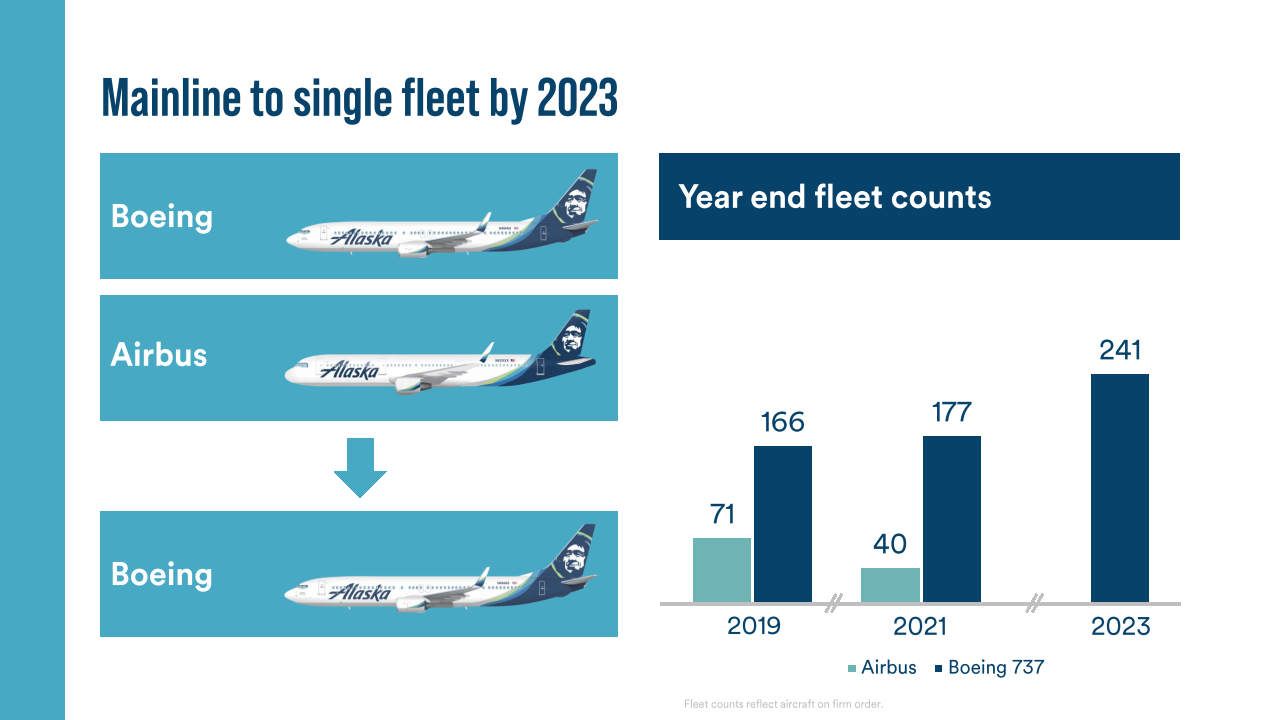
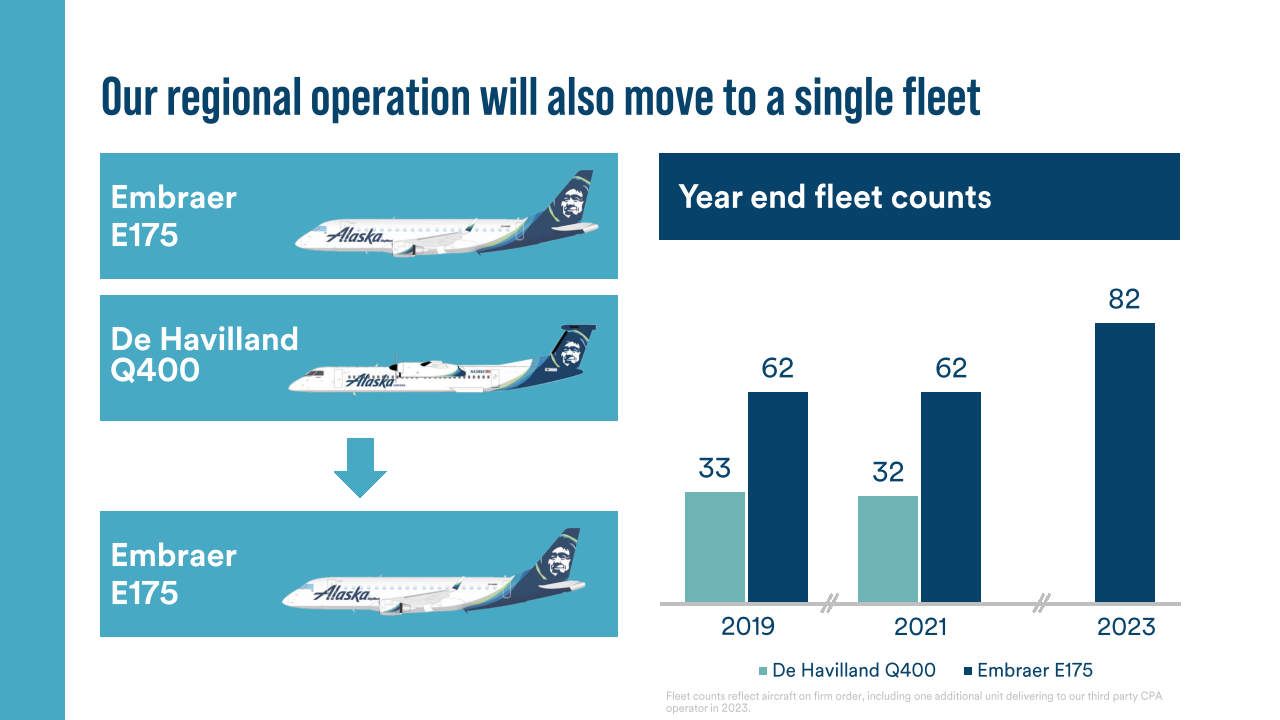
Why the mighty Dash-8 (aka Q400) is being phased out
Photo: AvgeekJoe Productions
Meanwhile, what is now the DeHavilland Aircraft of Canada Dash 8-400 (formerly the Bombardier Q400) is no slouch. The turboprop in Horizon Airlines service has no WiFi and a lot of nostalgia for the days of DC-3s and other propliners with 76 single-class passenger seats and a cruise speed of 400 mph (644 km/h) with a 1,114 NM range. But an aircraft with narrower seats that flies slower than its equivalent only appeals to avgeeks and not the bottom lines of an airline. The E175 promises everything the Dash-8 does not, like profitability, capacity, and being on-time.
For instance, Alaska Airlines' "Runway to Profitable Growth" may include a "compelling product" but also consists of an "efficient fleet." Alaska Airlines wants a quality in-flight product for the passengers booking those flights. Again the goal is to drive down the seat-mile cost to help keep airfares under control, and to fill the seats in a virtuous financial cycle for all flyers and financiers alike.
Thoughts on the Alaska Airlines fleet changes? Going to book a Dash-8 flight before it's too late? Please feel free to comment below but with civility, please.

